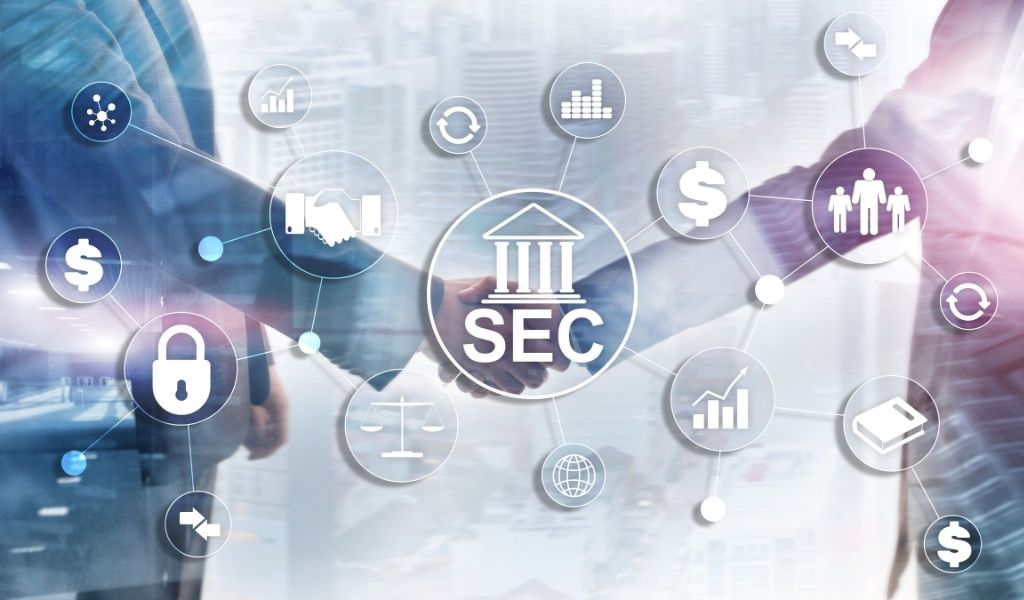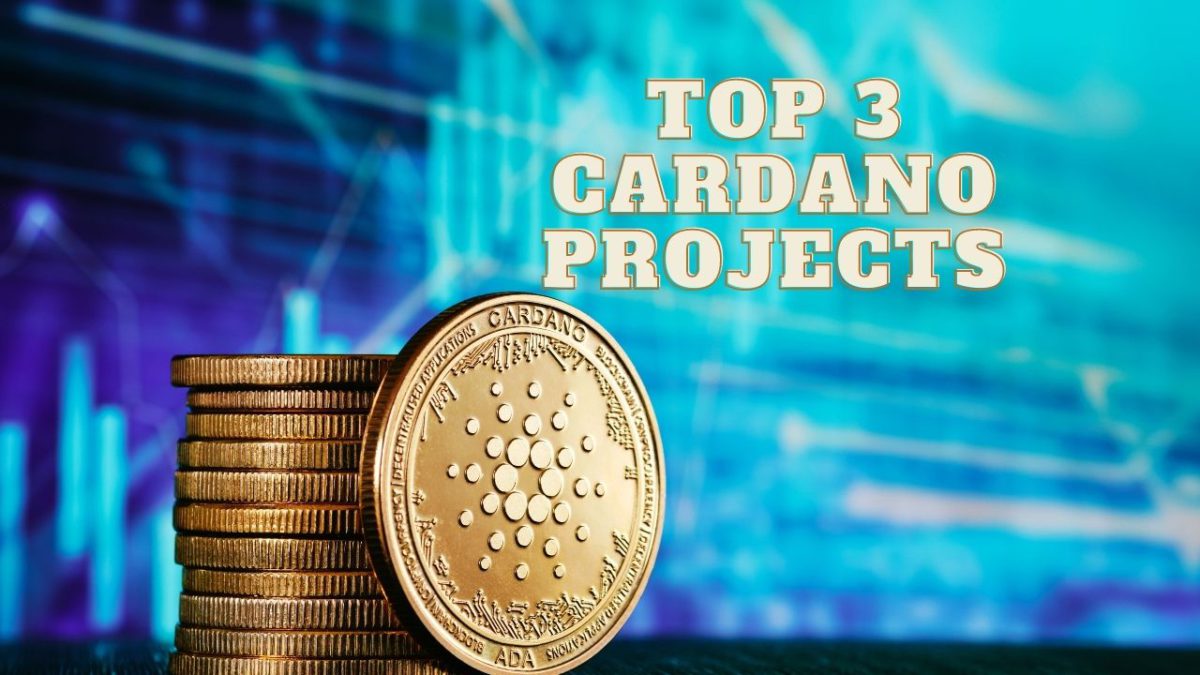The Amazing Rise of Decentralized Derivatives Trading in the DeFi World In 2024
Decentralized derivatives trading is changing how people think about finance. Unlike traditional systems, where a central authority controls everything, decentralized finance (DeFi) allows users to trade directly with each other using blockchain technology. This shift is creating new opportunities and challenges in the financial world, making it essential to understand how decentralized derivatives work and their impact on the market.
Key Takeaways
- Decentralized derivatives eliminate the need for brokers, allowing users to trade directly through smart contracts.
- These financial tools can help users hedge against risks or speculate on asset prices without owning the actual assets.
- DeFi derivatives are growing rapidly, accounting for a significant portion of the total value locked in decentralized finance.
- Popular platforms like Synthetix and OPYN are leading the way in offering innovative trading solutions in the DeFi space.
- While decentralized derivatives offer many benefits, users should be aware of potential risks, including market volatility and regulatory challenges.
Understanding Decentralized Derivatives Trading
What Are Decentralized Derivatives?
Decentralized derivatives are financial contracts that allow users to trade based on the value of an underlying asset without needing a broker. These instruments are extremely flexible, enabling users to create contracts for almost any asset. Unlike traditional derivatives, they operate on blockchain technology, ensuring transparency and security.
How Do Decentralized Derivatives Work?
In decentralized derivatives trading, smart contracts automatically execute trades when specific conditions are met. This means that once the terms of the contract are fulfilled, the trade is settled on the blockchain without any human intervention. Here’s how it generally works:
- A user creates a contract specifying the asset and conditions.
- The smart contract is deployed on the blockchain.
- When the conditions are met, the contract executes automatically.
Key Differences Between Centralized and Decentralized Derivatives
| Feature | Centralized Derivatives | Decentralized Derivatives |
|---|---|---|
| Broker Requirement | Yes | No |
| Settlement | Manual | Automated via smart contracts |
| Flexibility | Limited | Extremely flexible |
| Transparency | Varies | High |
Decentralized derivatives are changing the way traders interact with financial markets, making it easier for anyone to participate without the need for intermediaries.
The rise of decentralized derivatives is reshaping the financial landscape, offering new opportunities for traders and investors alike.
The Evolution of Derivatives in DeFi
Early Days of Crypto Derivatives
The concept of derivatives isn’t new to the crypto world. It all started back in 2014 when centralized exchanges began offering derivatives. These early platforms set the stage for what would become a booming market. The introduction of decentralized derivatives in 2020 marked a significant shift, allowing users to trade without needing a broker.
The Rise of DeFi Platforms
As decentralized finance (DeFi) platforms gained popularity, they began to incorporate derivatives. This change allowed traders to engage in more flexible and innovative trading strategies. The use of smart contracts made it possible to automate trades, ensuring that transactions occur when specific conditions are met. This automation has made trading more efficient and accessible.
Milestones in Decentralized Derivatives
Several key milestones have shaped the landscape of decentralized derivatives:
- Launch of Synthetix: Pioneered synthetic assets, allowing users to trade derivatives tied to various assets.
- Introduction of OPYN: Focused on options trading, providing more tools for traders.
- Emergence of MCDEX: Specialized in perpetual contracts, enhancing trading strategies.
| Year | Milestone | Description |
|---|---|---|
| 2014 | Centralized Derivatives | First derivatives offered on centralized exchanges. |
| 2020 | Decentralized Derivatives | Introduction of trading without brokers. |
| 2021 | Synthetix Launch | Pioneered synthetic assets in DeFi. |
The evolution of derivatives in DeFi has opened up new opportunities for traders, making it easier to hedge risks and speculate on market movements.
Decentralized derivatives now account for a significant portion of the total value locked in DeFi, showcasing their growing importance in the financial ecosystem. Understanding this evolution is crucial for anyone looking to navigate the DeFi landscape.
Popular Decentralized Derivatives Protocols
Synthetix: Pioneering Synthetic Assets
Synthetix is a leading platform that allows users to trade synthetic assets on the blockchain. This platform enables seamless trading without the need for traditional brokers. Users can create and trade assets that mimic the value of real-world assets, providing a unique way to gain exposure to various markets.
OPYN: Options Trading in DeFi
OPYN started as a solution for crypto insurance but has evolved into a platform for options trading. It allows users to profit from speculative trades and manage risks effectively. The platform is designed for those looking to explore the potential of options in a decentralized environment.
MCDEX: Leveraging Perpetual Contracts
MCDEX is another significant player in the decentralized derivatives space. It offers traders the ability to engage in perpetual contracts with leverage up to 10X. This feature allows users to maximize their trading potential while managing their risks effectively.
Summary of Popular Protocols
Here’s a quick overview of the mentioned protocols:
| Protocol | Key Feature | Use Case |
|---|---|---|
| Synthetix | Synthetic assets | Trading various markets |
| OPYN | Options trading | Speculation and risk management |
| MCDEX | Perpetual contracts | Leveraged trading |
Decentralized derivatives are changing the way traders interact with financial markets, offering new opportunities and challenges. As the technology evolves, these platforms are likely to become even more integral to the DeFi landscape.
Benefits and Risks of Decentralized Derivatives
Advantages of Decentralized Derivatives
Decentralized derivatives offer several benefits that make them appealing to traders and investors:
- No Middlemen: They eliminate the need for brokers, allowing for direct trading.
- Flexibility: Users can create contracts based on various underlying assets.
- Transparency: All transactions are recorded on the blockchain, ensuring accountability.
Potential Risks and Challenges
While decentralized derivatives have their advantages, they also come with risks:
- Security Risks: Smart contracts can have vulnerabilities, leading to potential hacks.
- Regulatory Uncertainty: The lack of clear regulations can create confusion for users.
- Market Volatility: Prices can fluctuate significantly, posing risks for traders.
Regulatory Concerns
The decentralized nature of these derivatives raises important regulatory questions. As decentralized finance (DeFi) grows, regulators are trying to catch up. This could lead to stricter rules that might affect how these derivatives operate.
In the evolving world of finance, understanding both the benefits and risks of decentralized derivatives is crucial for making informed decisions. Decentralized finance (DeFi) is reshaping how we think about trading and investing, but caution is necessary to navigate its complexities.
Technological Innovations in DeFi Derivatives
Smart Contracts and Automation
Decentralized derivatives rely heavily on smart contracts. These are self-executing contracts with the terms directly written into code. This means that when certain conditions are met, the contract executes automatically without needing a middleman. This automation not only speeds up transactions but also reduces costs.
Virtual Liquidity Machines
One of the most exciting innovations is the virtual liquidity machine. This technology allows for constant liquidity by using smart contracts to manage both long and short positions. It helps in mitigating risks for liquidity providers by removing their role and transferring the risk to the protocol itself.
Interoperability Between Protocols
Interoperability is crucial in the DeFi space. It allows different protocols to work together seamlessly. This means that users can easily move their assets across various platforms, enhancing their trading experience. This interconnectedness is vital for the growth of decentralized derivatives.
The integration of these technologies is reshaping how we view trading and investment in the DeFi space.
Summary of Key Innovations
| Innovation | Description |
|---|---|
| Smart Contracts | Automate execution of contracts without intermediaries. |
| Virtual Liquidity Machines | Provide constant liquidity and reduce risks for providers. |
| Interoperability | Enables seamless asset movement across different DeFi platforms. |
Conclusion
The technological advancements in decentralized derivatives are paving the way for a more efficient and accessible trading environment. As these innovations continue to evolve, they will likely attract more users and investors into the DeFi space, further enhancing its growth and adoption.
Decentralized derivatives are not just a trend; they represent a significant shift in how we approach trading in the financial world. The future looks promising!
Market Dynamics and Future Trends
Current Market Landscape
The decentralized derivatives market is growing rapidly. Many investors are exploring new opportunities in this space. The market is characterized by:
- Increased participation from retail and institutional investors.
- A variety of platforms offering unique derivatives products.
- Enhanced liquidity due to the rise of automated market makers.
Future Trends in Decentralized Derivatives
As the market evolves, several trends are emerging:
- Integration of AI and machine learning to improve trading strategies.
- Greater interoperability between different DeFi platforms.
- Expansion of derivatives products to include more asset classes.
| Trend | Description |
|---|---|
| AI Integration | Using AI for better trading decisions |
| Interoperability | Seamless connections between DeFi platforms |
| Product Expansion | More diverse derivatives offerings |
Impact on Traditional Finance
The rise of decentralized derivatives is likely to influence traditional finance significantly. This could reshape the financial landscape by:
- Reducing reliance on intermediaries.
- Offering more transparent pricing mechanisms.
- Allowing for greater access to financial products for everyone.
The future of decentralized finance (DeFi) and investment opportunities could reshape the financial landscape.
In conclusion, the decentralized derivatives market is on the brink of major changes. As technology advances and more users join, the potential for growth is immense. Keeping an eye on these developments is crucial for anyone interested in the future of finance.
Practical Applications and Use Cases
Hedging and Speculation
Decentralized derivatives offer unique opportunities for hedging against market risks. Traders can use these tools to protect their investments from price fluctuations. Here are some common applications:
- Risk Management: Investors can hedge their positions to minimize potential losses.
- Speculative Trading: Traders can bet on price movements without owning the underlying asset.
- Portfolio Diversification: Using derivatives allows for a broader range of investment strategies.
Synthetic Assets and Real-World Ties
Synthetic assets are a key feature of decentralized derivatives. They allow users to create assets that mimic the value of real-world items. This can include:
- Real Estate: Tokenizing property values for easier trading.
- Commodities: Creating derivatives based on gold, oil, or other resources.
- Stocks: Offering synthetic versions of popular stocks for trading.
Leveraged Trading Strategies
Leveraged trading can amplify gains but also increases risks. Here’s how it works in decentralized derivatives:
- Increased Exposure: Traders can control larger positions with less capital.
- Margin Trading: Users can borrow funds to increase their trading capacity.
- Potential for Higher Returns: Successful trades can yield significant profits, but losses can also be magnified.
Decentralized derivatives are reshaping how traders interact with financial markets. They provide innovative ways to manage risk and explore new investment avenues.
In summary, decentralized derivatives are not just about trading; they are about creating a more flexible and accessible financial ecosystem. Their applications in hedging, synthetic assets, and leveraged strategies highlight their growing importance in the DeFi landscape.
Highlights
- Hedging: Protecting investments.
- Synthetic Assets: Mimicking real-world values.
- Leveraged Trading: Amplifying gains and risks.
Conclusion
Entering the world of decentralized derivatives trading is not a walk in the park. It’s wise to choose tech partners who know their stuff and have a strong background in blockchain. The true potential of decentralized derivatives is just starting to show. Signs point to a big surge in interest this year. With fresh players joining the scene and current users pushing for new ideas, this exciting area is definitely one to watch.
Frequently Asked Questions
What are decentralized derivatives?
Decentralized derivatives are contracts that allow people to trade based on the value of other assets without needing a broker. They use smart contracts on a blockchain to automatically settle trades when certain conditions are met.
How do decentralized derivatives work?
These derivatives work by using smart contracts to set the rules for trading. When the conditions in the contract are fulfilled, the trade is settled automatically on the blockchain.
What is the difference between centralized and decentralized derivatives?
Centralized derivatives require a broker to facilitate trades, while decentralized derivatives operate on a blockchain without a middleman. This makes decentralized trading more flexible and accessible.
What are some popular decentralized derivatives platforms?
Some well-known platforms include Synthetix, which focuses on synthetic assets, OPYN for options trading, and MCDEX for perpetual contracts.
What are the benefits of using decentralized derivatives?
Decentralized derivatives offer advantages like lower fees, increased privacy, and the ability to trade without intermediaries. They also allow for more diverse trading options.
What risks are associated with decentralized derivatives?
Risks include security vulnerabilities in smart contracts, market volatility, and regulatory uncertainties. Users should be careful and do their research before trading.
Stay informed with daily updates from Blockchain Magazine on Google News. Click here to follow us and mark as favorite: [Blockchain Magazine on Google News].
Get Blockchain Insights In Inbox
Stay ahead of the curve with expert analysis and market updates.
latest from tech
Disclaimer: Any post shared by a third-party agency are sponsored and Blockchain Magazine has no views on any such posts. The views and opinions expressed in this post are those of the clients and do not necessarily reflect the official policy or position of Blockchain Magazine. The information provided in this post is for informational purposes only and should not be considered as financial, investment, or professional advice. Blockchain Magazine does not endorse or promote any specific products, services, or companies mentioned in this posts. Readers are encouraged to conduct their own research and consult with a qualified professional before making any financial decisions. The featured image used is just a creative depiction of the title and it does not intend to hurt sentiments of any person or institution. If it hurts anyone sentiments, please do not hesitate to reach out to Blockchain Magazine.

 Bitcoin
Bitcoin  Ethereum
Ethereum  XRP
XRP  Tether
Tether  Solana
Solana  Dogecoin
Dogecoin  USDC
USDC  Cardano
Cardano  Lido Staked Ether
Lido Staked Ether  TRON
TRON  Chainlink
Chainlink  Avalanche
Avalanche  Wrapped stETH
Wrapped stETH  Stellar
Stellar  Wrapped Bitcoin
Wrapped Bitcoin  Sui
Sui  Hedera
Hedera  Toncoin
Toncoin  Shiba Inu
Shiba Inu  WETH
WETH  Polkadot
Polkadot  Parkcoin
Parkcoin  LEO Token
LEO Token  Bitget Token
Bitget Token  Litecoin
Litecoin  Bitcoin Cash
Bitcoin Cash  Uniswap
Uniswap  Hyperliquid
Hyperliquid  Official Trump
Official Trump  Wrapped eETH
Wrapped eETH  Pepe
Pepe  USDS
USDS  NEAR Protocol
NEAR Protocol  Ethena USDe
Ethena USDe  Aave
Aave  Aptos
Aptos  Internet Computer
Internet Computer  Ondo
Ondo  Monero
Monero  Ethereum Classic
Ethereum Classic  POL (ex-MATIC)
POL (ex-MATIC)  OKB
OKB  Cronos
Cronos  Dai
Dai  Mantle
Mantle  Algorand
Algorand  Render
Render  MANTRA
MANTRA 




